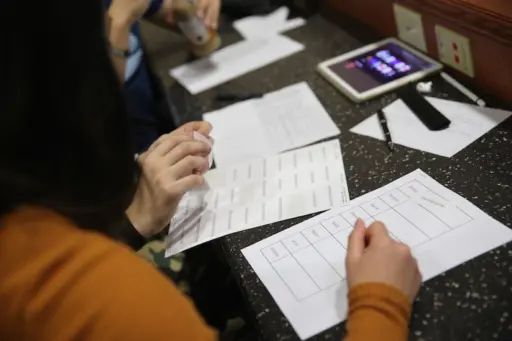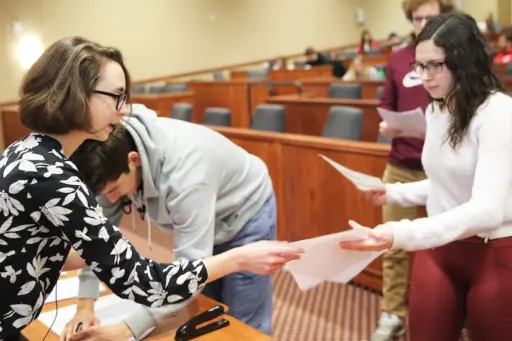The clock is ticking as a roomful of first-year industrial engineering students scramble to sift through lists of patients, their diagnoses, medications with alphabet soup names and their uses.
Each group’s task: correctly match the proper drugs to the patients—and do so in seven minutes, while trying to finish ahead of their classmates.
 The exercise demonstrates the value of employing a human factors engineering approach to healthcare systems.
The exercise demonstrates the value of employing a human factors engineering approach to healthcare systems.
It’s an exercise in being at the mercy of a flawed system that can wield costly impacts on real people. The lists are unordered messes, several drug names are frustratingly similar, and the time crunch increases the chance of making a mistake.
After brainstorming potential interventions to improve the situation, the students get a second chance—this time with an adaptation used in the healthcare industry called “tall man lettering,” in which parts of drug names are capitalized to differentiate them.
“This is a case study of why industrial engineering is important,” course instructor Amanda Smith tells the class.
That lesson is the essence of ISyE 191, The Practice of Industrial Engineering, a course for first-year and transfer students that introduces them to the discipline, explains subfields and career paths within it, highlights the resources available in the Department of Industrial and Systems Engineering and through student organizations, and connects them to alumni.
Faculty members from potential focus areas such as human factors engineering, healthcare systems engineering, operations research, and manufacturing and supply chain management visit throughout the semester to help students tease out their interests within a major that can be opaque.
 Teams hustle to beat the clock and hand in their work to course instructor Amanda Smith.
Teams hustle to beat the clock and hand in their work to course instructor Amanda Smith.
“I came in not really knowing what I wanted to do, except that I knew that industrial engineering was more of the business side of engineering, so that’s what I was really looking forward to,” says Karissa Tschida, a first-year student from St. Paul, Minnesota. “I’m really looking forward to getting to hear different speakers, so I can figure out what my niche will be in the field.”
Along with activities like the prescription exercise and fundamental skill tutorials—about half the course consists of active learning experiences—students work on a team project identifying potential solutions to a relevant problem in their chosen interest area and then create a presentation.
“They get to explore and hopefully at the end of it actually care about the thing that they’re trying to do,” says Smith, ISyE’s associate chair for undergraduate affairs, who teaches the course with department chair Jeff Linderoth. “And it gives them the chance to work on a team, which is a very useful engineering skill to have.”
ISyE also wants new students to envision their future careers by talking to those who have gone before them. In the spring 2019 semester—the first time ISyE offered this iteration of the introductory course—members of the department’s alumni advisory board visited for a question-and-answer panel, and Smith says alumni interaction will always be a key part of the course.
It’s one piece of a broader goal: to inform and inspire students while building a sense of a cohort.
“We want them to know,” says Linderoth, “that industrial engineering’s going to be a great home for them for the next three and a half years.”